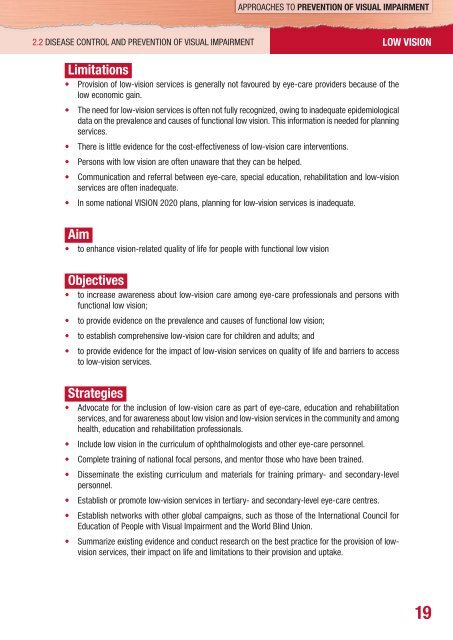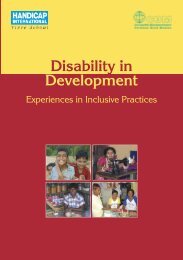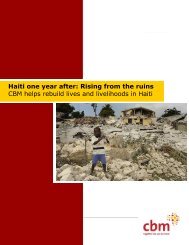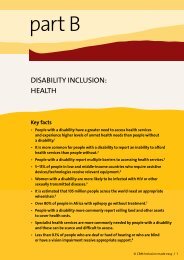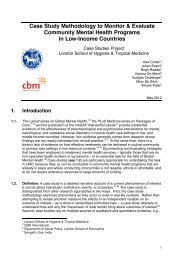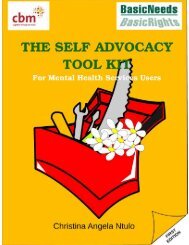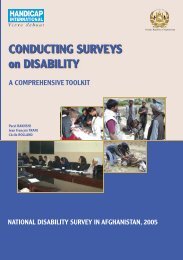Vision 2020 - World Health Organization
Vision 2020 - World Health Organization
Vision 2020 - World Health Organization
Create successful ePaper yourself
Turn your PDF publications into a flip-book with our unique Google optimized e-Paper software.
APPROACHES TO PREVENTION OF VISUAL IMPAIRMENT<br />
2.2 DISEASE CONTROL AND PREVENTION OF VISUAL IMPAIRMENT LOW VISION<br />
Limitations<br />
• Provision of low-vision services is generally not favoured by eye-care providers because of the<br />
low economic gain.<br />
• The need for low-vision services is often not fully recognized, owing to inadequate epidemiological<br />
data on the prevalence and causes of functional low vision. This information is needed for planning<br />
services.<br />
• There is little evidence for the cost-effectiveness of low-vision care interventions.<br />
• Persons with low vision are often unaware that they can be helped.<br />
• Communication and referral between eye-care, special education, rehabilitation and low-vision<br />
services are often inadequate.<br />
• In some national VISION <strong>2020</strong> plans, planning for low-vision services is inadequate.<br />
Aim<br />
• to enhance vision-related quality of life for people with functional low vision<br />
Objectives<br />
• to increase awareness about low-vision care among eye-care professionals and persons with<br />
functional low vision;<br />
• to provide evidence on the prevalence and causes of functional low vision;<br />
• to establish comprehensive low-vision care for children and adults; and<br />
• to provide evidence for the impact of low-vision services on quality of life and barriers to access<br />
to low-vision services.<br />
Strategies<br />
• Advocate for the inclusion of low-vision care as part of eye-care, education and rehabilitation<br />
services, and for awareness about low vision and low-vision services in the community and among<br />
health, education and rehabilitation professionals.<br />
• Include low vision in the curriculum of ophthalmologists and other eye-care personnel.<br />
• Complete training of national focal persons, and mentor those who have been trained.<br />
• Disseminate the existing curriculum and materials for training primary- and secondary-level<br />
personnel.<br />
• Establish or promote low-vision services in tertiary- and secondary-level eye-care centres.<br />
• Establish networks with other global campaigns, such as those of the International Council for<br />
Education of People with Visual Impairment and the <strong>World</strong> Blind Union.<br />
• Summarize existing evidence and conduct research on the best practice for the provision of lowvision<br />
services, their impact on life and limitations to their provision and uptake.<br />
19


